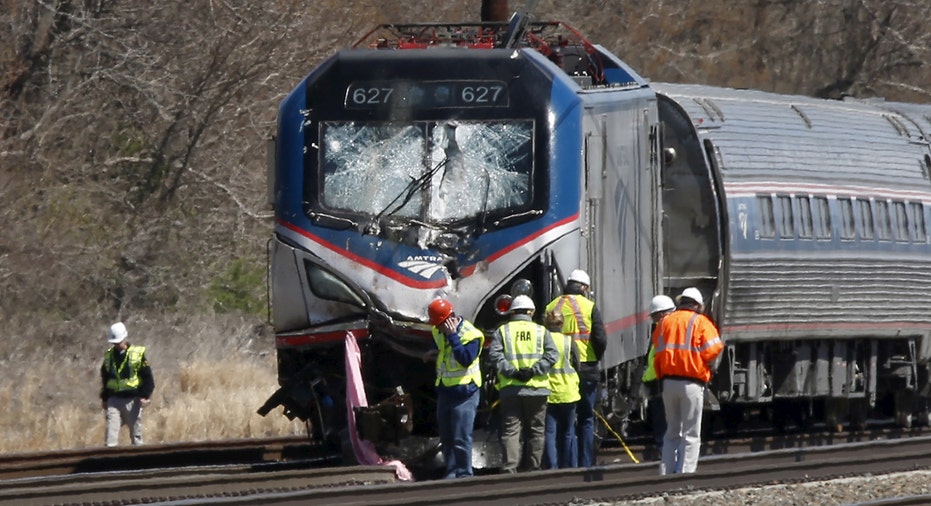Deadly Amtrak Crash Occurred Despite Worker Safety Regulations

The deadly train crash that killed two Amtrak construction workers in Chester, Pennsylvania on Sunday morning occurred despite federal requirements that are designed to protect railroad employees performing maintenance work on the tracks.
An Amtrak train traveling from New York to Savannah, Georgia collided with a piece of construction equipment called a backhoe that was on the tracks near Philadelphia. The backhoe’s operator was among the two people killed in the accident. Of the train’s 341 passengers, 35 suffered non-fatal injuries, FOX News reported.
Officials have yet to determine what caused the accident. Representatives from Amtrak and the Federal Railroad Administration declined to comment and referred FOXBusiness.com’s inquiry to the National Transportation Safety Board, which is leading the investigation. The NTSB said it would provide an update on its investigation by later Monday afternoon.
While it’s unclear if human error or mechanical failure played a role in the Amtrak crash, federal regulations require railroads to implement precautions to guarantee the safety of workers and equipment during construction and track repairs. The safety protocols are detailed in the Federal Railroad Administration’s portion of the Code of Federal Regulations.
Crucially, the FRA mandates that rail operators warn employees of any changes to their work schedule. According to Section 214.319c of the Code of Federal Regulations, trains are not permitted to pass through a work area until employees have had time to clear themselves and their equipment from the area.
“All affected roadway workers shall be notified before working limits are released for the operation of trains. Working limits shall not be released until all affected roadway workers have either left the track or have been afforded on-track safety through train approach warning in accordance with §214.329 of this subpart,” the section says.
In addition, railroads must use at least one of three main forms of “primary protection” for maintenance employees.
“Exclusive track occupancy” is used for long-term projects. The train dispatcher gives a designated employee in charge of the construction site authority to close off the route to incoming trains. The affected railroad uses stop signals and designated safety workers, known as “flagmen,” to warn trains not to enter the area. Any train that does enter a stretch of rail identified as “exclusive track occupancy” must have special permission, and can only do so at a reduced speed.
“Foul time” is another federally-mandated form of “primary protection,” typically used during short-term construction projects. Under that protocol, dispatchers are warned not to allow trains to enter the affected area of track until workers have confirmed that they are clear of the area.
Railways can also make it physically impossible for trains to enter repair zones by rerouting with switches or using derailers, which force trains off the track before they can impact a work zone.
Rail operators are also encouraged to enact secondary precautions, such as the use of “watchmen” that can give workers a 15-second window to move away from a track before an approaching train enters the area.
So far, neither Amtrak nor the NTSB has commented on whether these worker protections were in place before the incident.



















